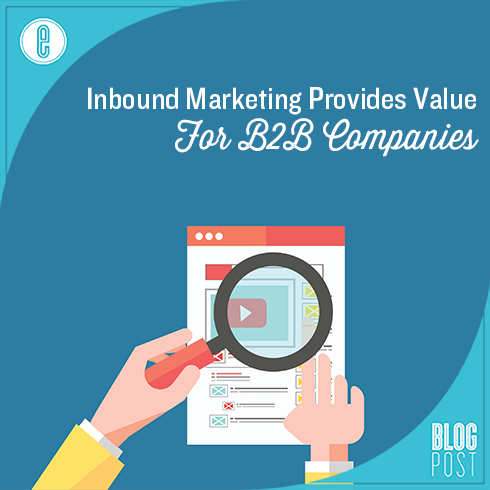B2B companies face a unique dilemma when it comes to their marketing efforts. Unlike marketing directly to consumers and customers, B2B organizations know that the awareness and discovery process of their potential clients may take weeks, or even months – and that’s to say nothing of the actual sales process.
Due to this reality, many B2B companies and their leadership teams often focus the majority of their marketing resources on aggressive outbound campaigns – cold calls, ad spends, media blasts, and the like. This approach, however appealing, can often exact a toll on a company’s resources, appearance, and overall health. Although outbound marketing can be part of any strategy, it’s equally vital to remember that inbound marketing can be an inexpensive (and much more effective) means of generating revenue and gaining clients.
The Value of Inbound Marketing For B2B Companies
At its core, inbound marketing is simply attempting to pull people into your circle of business, as opposed to you trying to break into theirs. Inbound works in many different forms, fashions, and mediums, but it’s ultimately about creating content that speaks to the audience you are trying to reach, whether they’re CMOs at Fortune 1000 companies or people you think might enjoy the products of your small bakery.
A key facet of inbound marketing is emphasized in one of digital marketing’s favorite proverbs – namely, “content is king”. Your clients want to read or watch content that is interesting, informative, entertaining, or helps them learn in some way. A well-produced infographic or blog article is significantly cheaper than a month of AdWords, and may prove to be even more effective at getting the attention of the companies you are trying to reach.
So, how is good inbound marketing done? The answer depends on who your company is, and who you are trying to reach.
The exact form of the content you make can come in a plethora of forms. White papers, videos, novelty websites, memes posted on your company’s Twitter feed – all of these are equally valid inbound content pieces. The only questions, really, are determining what kind of message you want to send to your potential customers, finding them where they already spend their time, and deciding what kind of upfront value you want to provide to them.
That idea of upfront value is what many companies struggle with when it comes to inbound marketing – the idea that they should provide value to people who may or may not eventually become customers, completely free of charge and without any immediate expectation of business. Instead, you are working on forming a relationship with your audience – letting them get to know your brand style while you position yourself as a thought leader in your industry. This upfront investment is why many companies ultimately don’t use some facets of inbound marketing to their advantage – simply because it doesn’t provide overnight results – these strategies take a bit of time, but the results are measurable and compounding.
It’s important to note that while some of your content should be completely “free,” much of it should be gated in some way. This isn’t to say that your audience should have to pay for a white paper – but maybe they need to give you an email address, company name, company size, and city of residence. This provides valuable data for your marketing strategy, while your audience gains a valuable resource.
Companies Have Their Own Problems to Solve
Inbound marketing for B2B companies relies on the idea that companies have brand identities, similar to consumers. As monolithic and impenetrable as they may seem, it’s essential to remember that your organization has the potential to understand and solve the specific problems and needs of a company, just as a B2C company must solve the problems of individual consumers. This problem-solving mentality can be the catalyst for a long and productive relationship with your next big client.
-FINAL(01-00)-White&Blue-01.svg)





